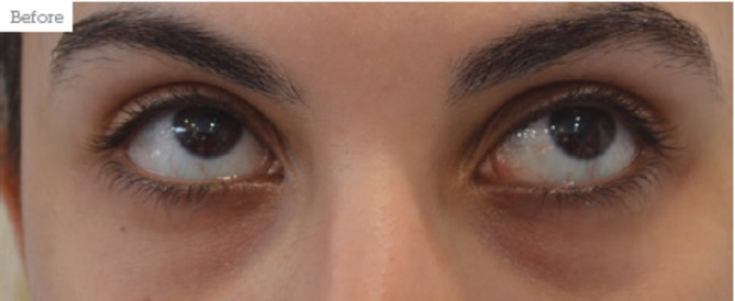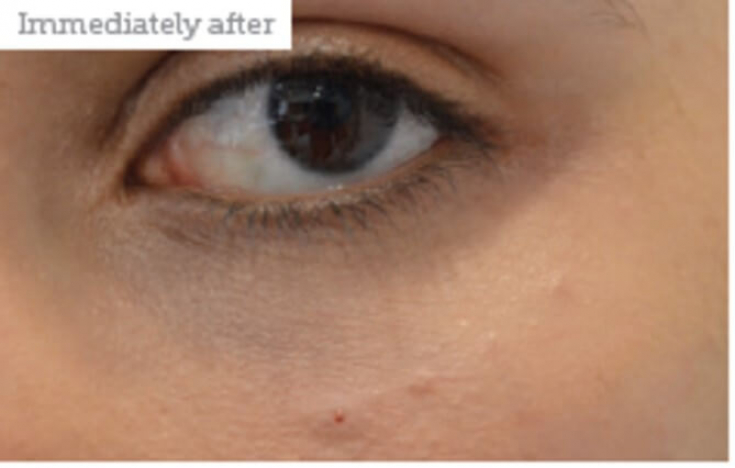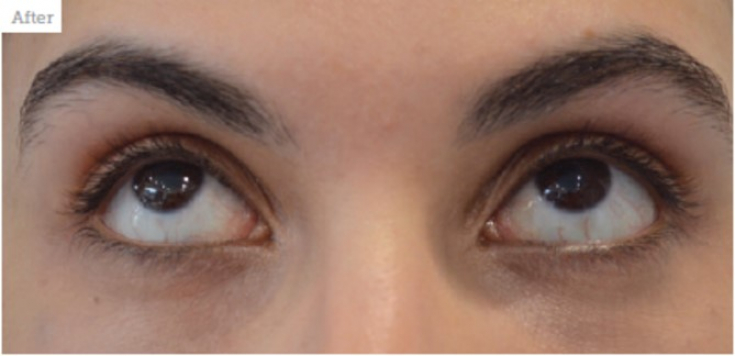Nasolacrimal trough correction – standard request of patients of aesthetic clinics.
An indentation in the infraorbital zone is conspicuous during eye contact and also gives the face a tired look.
Dr. Munir Somji (Munir Somji) believes that filling the nasolacrimal trough with filler provides a high level of patient satisfaction, because it allows " ;refresh» face.
The zone requires the practitioner to have good knowledge of the anatomy and rheology of dermal fillers.
This article estet-portal.com provides an example of nasolacrimal trough correction from the practice of Dr. Somji .
- Consultation and selection of a filler to fill the nasolacrimal trough
- Procedure and results of filling the nasolacrimal trough with fillers
Consultation and selection of a filler to fill the nasolacrimal trough
A 29-year-old female patient came to Dr. Somji's clinic complaining of dark circles under her eyes.
During the consultation, it was found that the patient had not previously undergone any surgical procedures, there was no history of allergic reactions and serious diseases. Of the drugs, the patient took only oral contraceptives Yasmin.
Lacrimal trough fillers: simple and effective
Inspection revealed:
- clearly defined nasolacrimal trough;
- palpebromalar sulcus;
- dark circles under the eyes;
- hyperpigmentation of the skin of the infraorbital zone.

Fig. 1: photo before filling the nasolacrimal trough filler

Fig. 2:

Fig. 3:
Read also: Nasal trough filling: the best cosmetic methods
The infraorbital zone requires the practitioner to have a good knowledge of the anatomy and rheology of dermal fillers. The author performed the filling of the nasolacrimal trough with
filler TeosyalRedensity II. Due to the low hygroscopicity of the gel (concentration of cross-linked and non-cross-linked hyaluronic acid – 15 mg/g), the degree of swelling after correction of the periorbital zone is significantly lower than with the introduction of other filleroin.
Procedure and results of nasolacrimal trough filling For
pain relief, a cream based on 4% lidocaine was applied to the skin of the target area.
Exposure time – 10 minutes.
During the procedure, the patient was in an upright position.
Follow us on1. Palpebromalar sulcus:
small boluses of the drug were administered from a point located 0.5 cm lateral to the outer corner of the eye;
- The filler was injected deep
- , up to the inside of the orbital septum using a 30 gauge needle;
- approximately 0.1 ml of the preparation was used for correction on each side of the face; in the area above the orbicular muscle of the eye
- , due to the risk of bruising, the author continued the procedure with cannula
- . 2. Nasolacrimal trough :
A 25 gauge cannula was used to inject the filler to the infraorbital fat;
in most cases- the drug is injected supraperiosteally
- , however, due to the low hygroscopicity of Teosyal Redensity II, the author, based on his own experience, considers it safe to inject the gel into the deep layers of the infraorbital fat
- ; the filler was gently injected using the retrograde microbolus technique along the entire length of the nasolacrimal sulcus at the level of the orbital ridge;
- The entry point was located 1 cm lateral to the nasolacrimal sulcus; after the filler injections, the author performed a light massage of the area.
- Since the patient's skin was sufficiently elastic and dense, the author also injected the filler
- subcutaneously over the orbicular muscle of the eye in the region of the nasolacrimal and palpebromalar sulci.
Using a cannula in a fan technique, 0.4 ml of the filler was injected under each eye.
Comprehensive approach to rejuvenation of the periorbital zone: correction of the nasolacrimal trough and ptosis of the upper eyelid
The patient was advised not to wear make-up for 24 hours after the injections, and to avoid extreme temperatures and intense physical activity for 48 hours after the correction. Due to the low hygroscopicity of the gel, the degree of swelling after Teosyal Redensity II correction of the periorbital zone is significantly lower than with other fillers.
Re-examination of the patient was performed after 10 days.
The patient was completely satisfied with the results of filling the nasolacrimal and palpebromalar sulci with filler, despite slight swelling at the injection site of the needle and cannula.
There was no bruising or tenderness in the treated area.
The procedure was repeated 14 months later.
According to
magazine.







Add a comment